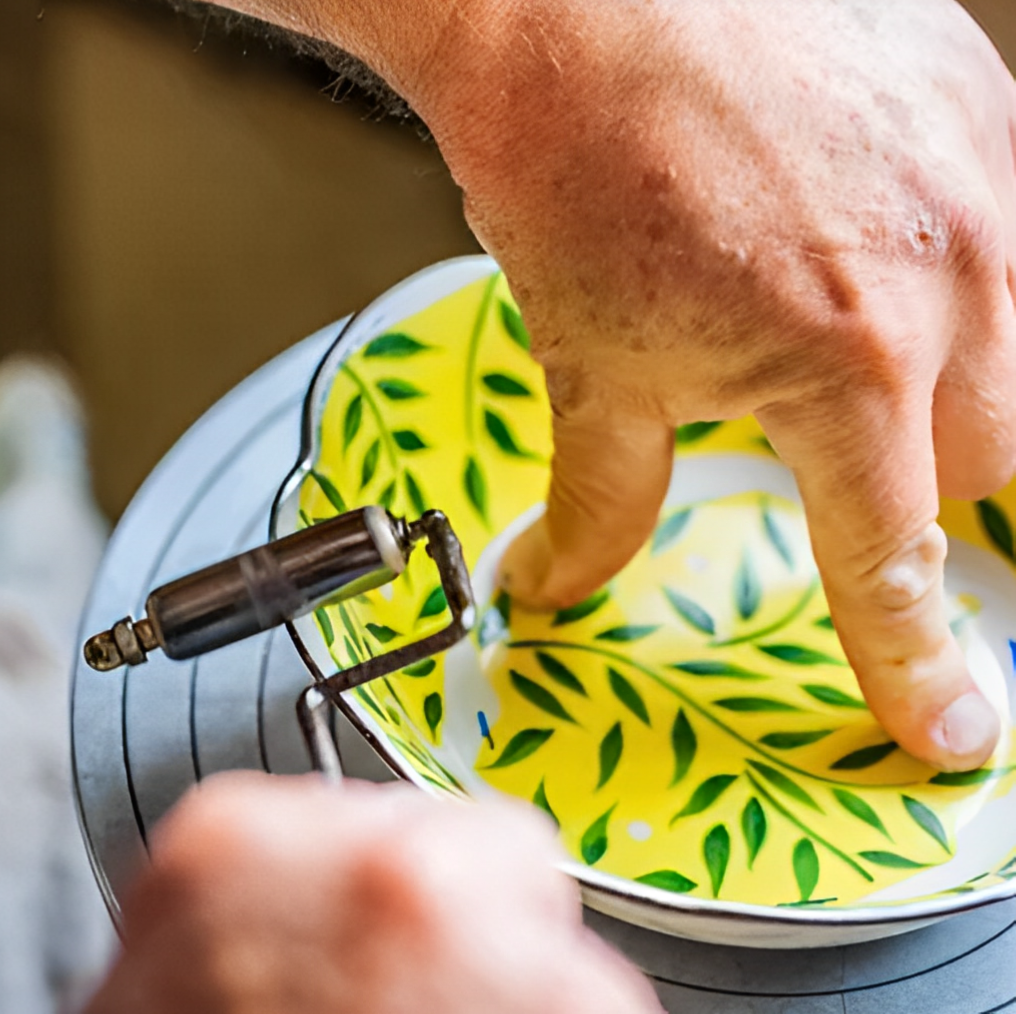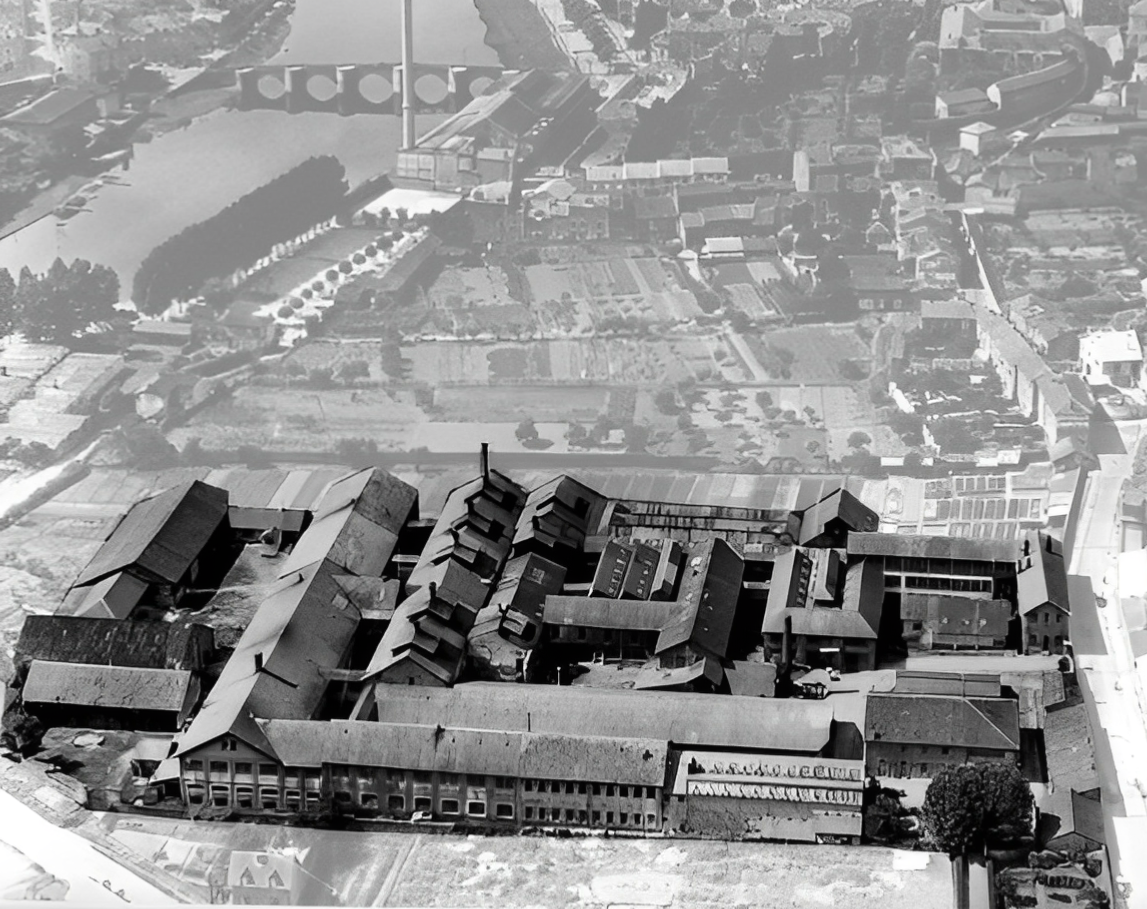ROYAL LIMOGES : OVER 200 YEARS OF KNOW-HOW The first porcelain factory in Limoges was founded in 1771. This small factory was under the protection of the Comte d'Artois, younger brother of Louis XVI, since 1774. Its director was Mr Alluaud, future founder of Royal Limoges.Ten years later the manufacture of Sevres repurchases the small manufacture of Limoges, becoming "La manufacture royales des porcelaines de Limoges".
The Limoges factory ended its activity in 1789 during the French Revolution. Less than a decade later, François Alluaud decided to found his own factory.
A FAMILY STORY In 1788, Alluaud Francois acquired the factory at 2, rue Bobillot in Limoges and operated it until 1793.
It is in 1797 that he founds his factory at 3 rue des Anglais in Limoges. In 1799 his eldest son succeeded him until 1808, date on which the activity ceased following a fire. The same year, Alluaud's son acquired the Manufacture de Monnerie et Joubert located at 3, rue de Paris in Limoges which he operated until 1815. The 28 rue Donzelot in Limoges, will become the headquarter of the manufacture in 1816. Installed with some steps of the Vienne river, it received wood, fuel of the furnaces, by floating. The raw material came from its kaolin quarries and the paste was prepared in its own mills. Over the years, the porcelain brand has been passed down from generation to generation within a family of dedicated craftsmen. Over the course of its 200-year history, the family has worked together to perfect their skills and create products that have taken pride of place in homes around the world.  THE ART DECO MOVEMENT ASCENT AND THE MANUFACTURE ACCESSION From the end of the 19th century, the factory specializes in the production of pieces in the Art Deco style.
It is also at this period that the company changes its name for G.D.A (Gerard, Duffraisseix, Abbot), initials of the purchasers of the manufacture. During the Art Nouveau and Art Deco artistic movements, GDA became a reference in the world of high-end porcelain. In the 1920's and 1930's, customers wanted elegant and modern porcelain. It is with its innovative design that the factory was able to seduce beyond the borders. It is in 1925 that the manufacture will see its visibility increase exponentially with the Exhibition of the decorative arts of Paris. G.D.A won the grand prize with its "Apollo" shape, renamed Nymphéa today. A floral shape and light curves which will bring to the manufacture an international visibility. It is also at this time that G.D.A collaborates with artists of the decorative arts movement such as the decorators Maurice Dufresne and Jacques-Emile Ruhlmann and the painter Louis Süe. A WORLWIDE RECOGNITION In the 1930s, G.D.A. was the largest porcelain brand in Limoges, with more than 1200 employees working in its factories. Its modern and elegant porcelain furniture, tableware and dinner services were highly appreciated by the elite of French and international society.  Manufacture G.D.A, 28 rue Donzelot, 1955 Its bicentennial creativity and quality allow it to offer one of the most complete and prestigious ranges of porcelain with the guarantee: "made and decorated in Limoges".
Tableware, table accessories, giftware, advertising items and hotel porcelain make up the factory's collection. This collection allows to satisfy the most demanding customers. From the greatest Parisian palaces to gastronomic restaurants and the greatest luxury houses, G.D.A. has built a strong relationship with the international luxury industry. It was in 1989 that the name Royal Limoges was chosen to rename the factory. The name Royal Limoges echoes the beginnings of the factory, wanting to highlight the relationship that the porcelain factory had with the French royalty. 1920 CONQUERING THE US The New York Central Lines was an American railroad company operating in the northeastern United States and southeastern Canada. Its main points of connection were New York with its famous Grand Central Terminal, Chicago and Boston.
For much of the 20th century, the New York Central Lines was known for having some of the most prestigious passenger trains in the United States.
Royal Limoges - GDA was called upon by the railroad to equip the dining cars with porcelain. L. Bart & Son
Porcelain was supplied to the United States through L. Barth and Son in New York. These specialists in the distribution and decoration of tableware for hotels and restaurants will have an important impact in the introduction of Royal Limoges - GDA on American soil. |
